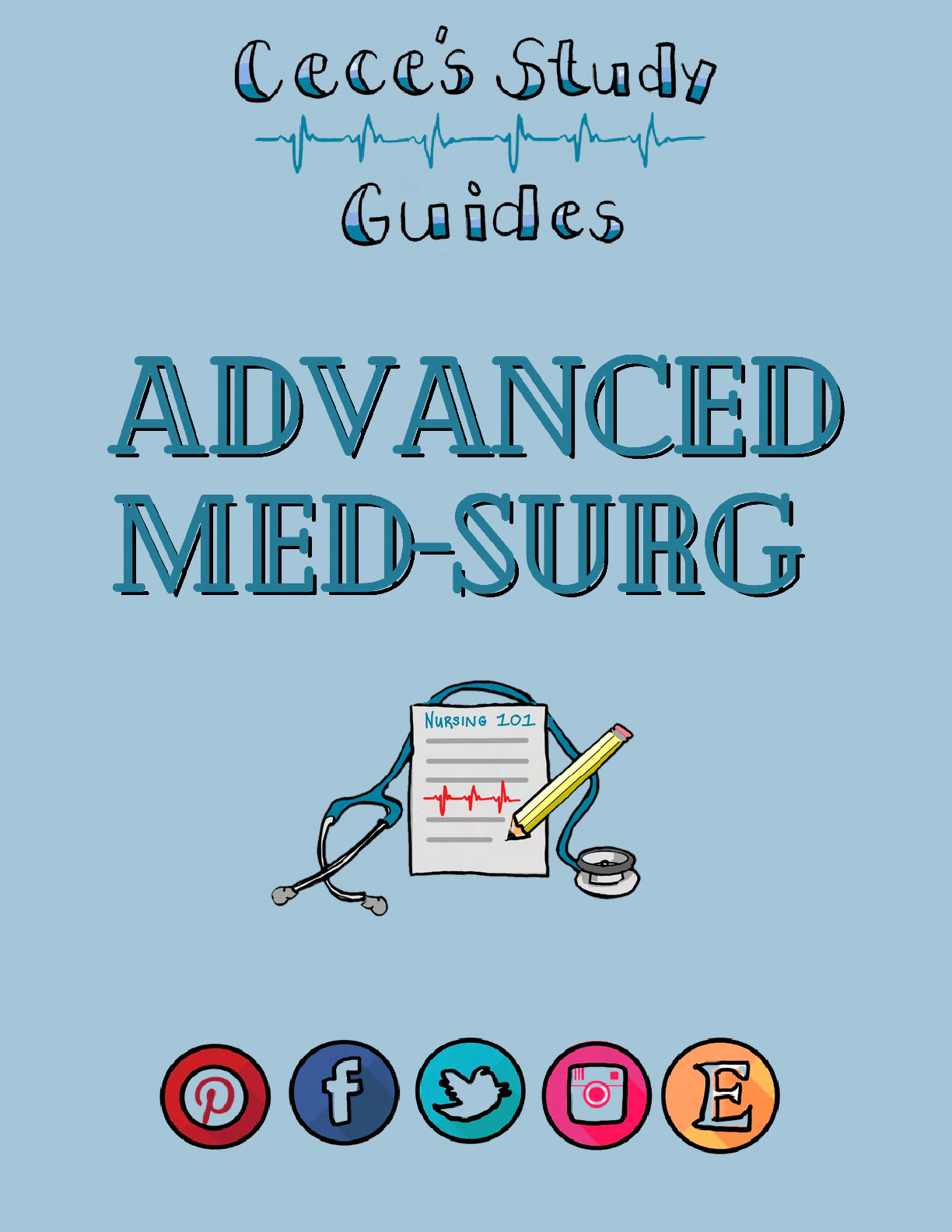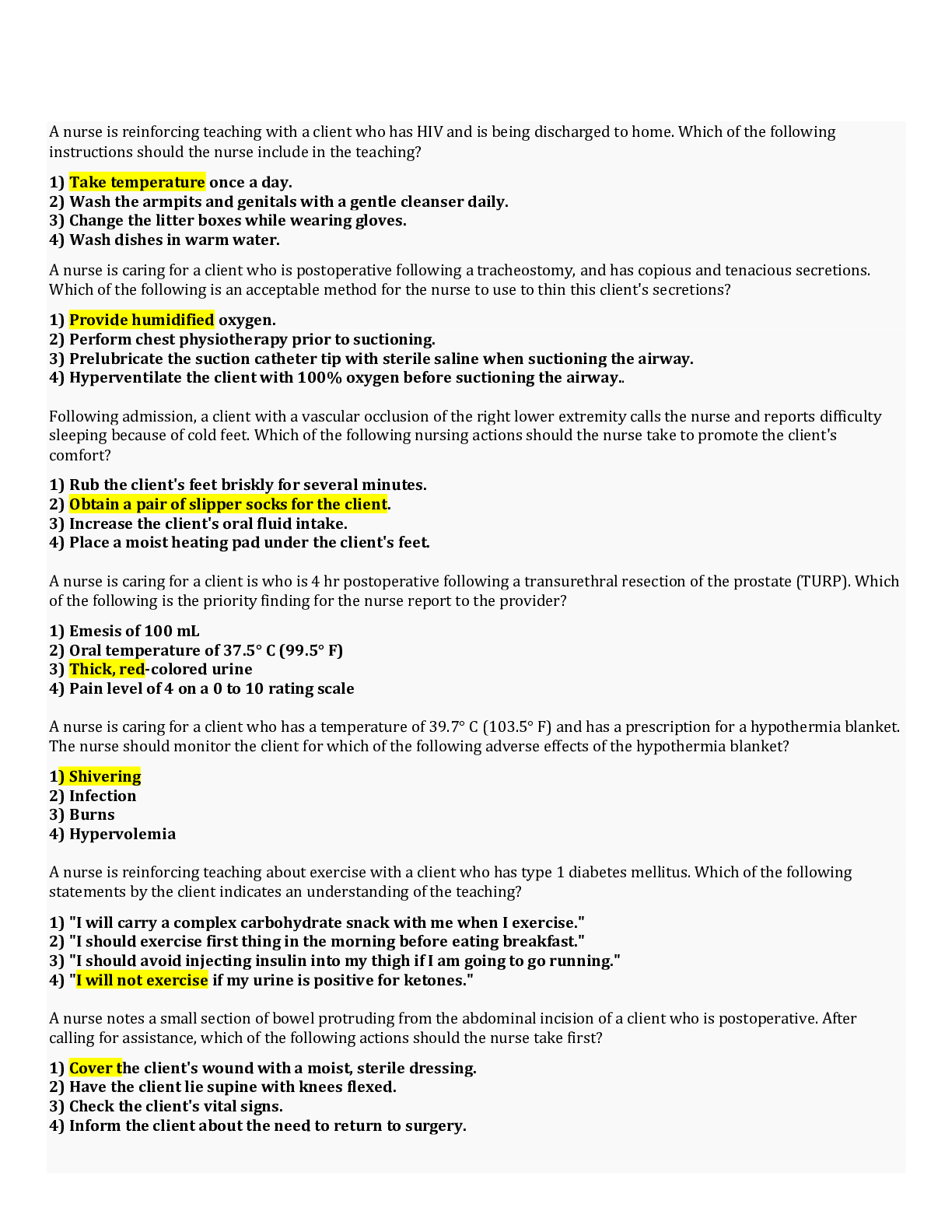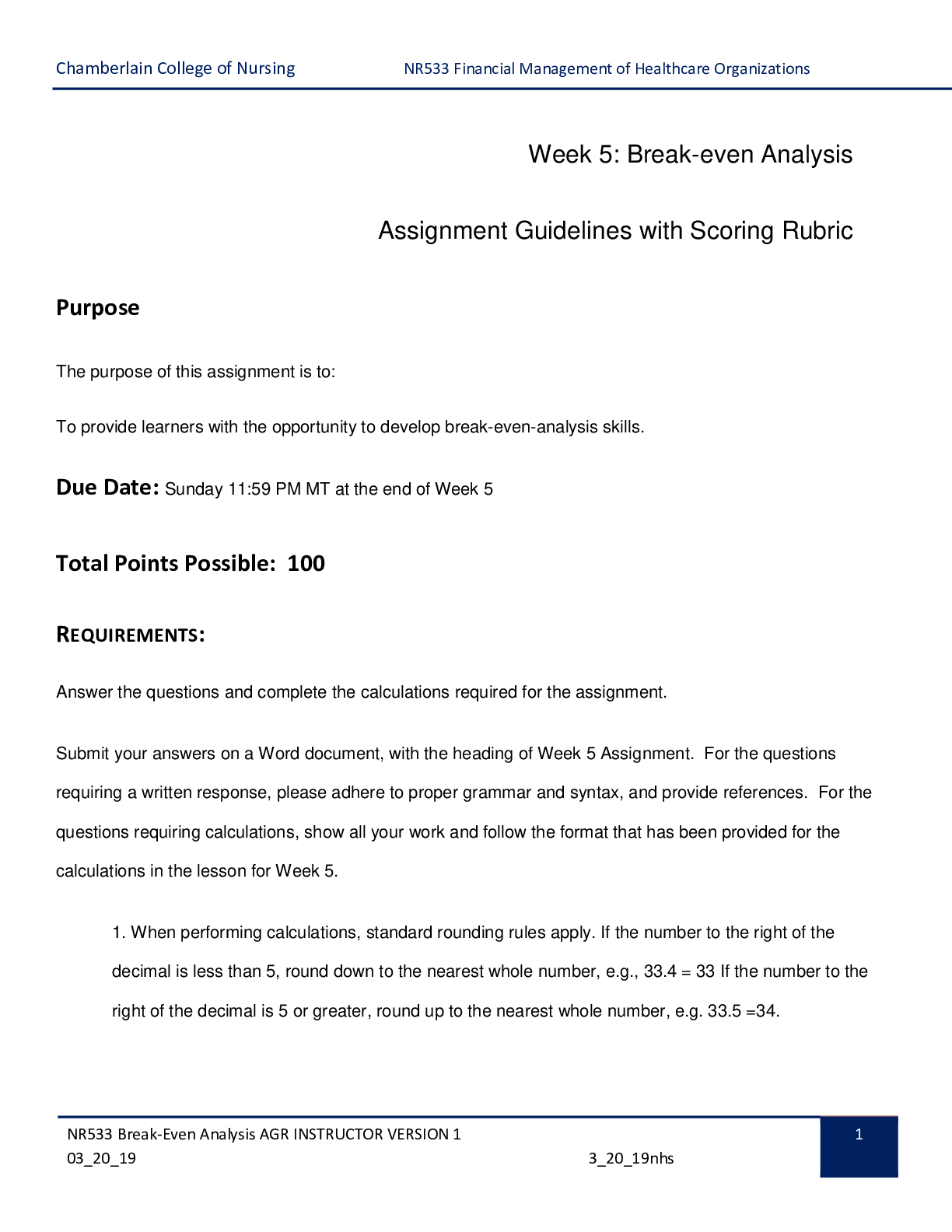Biology > STUDY GUIDE > Biol235 Final Review(human anatomy and physiology (bio 235)} (All)
Biol235 Final Review(human anatomy and physiology (bio 235)}
Document Content and Description Below
Buffy Coat: The fraction of an anticoagulated blood sample that contains most of the WBCs and platelets. (Page 662) Plasma Proteins: Proteins confined to blood; include: albumins, globulin, and fibri... nogen. (Page 664) White blood cells (WBCs) or leukocytes protect the body from invading pathogens and other foreign substances. There are several types of WBCs. Each type of WBC contributes in its own way to the body's defense mechanisms. (Page 664) o Major Function : Combat pathogens and other foreign substances that enter the body. (Page 675) Hemopoiesis: The process by which the formed elements of blood develop; occurs in red bone marrow. (Page 665) Thrombopoietin (TPO): A hormone produced by the liver that stimulates the formation of platelets from megakaryocytes. (Page 667) o Megakaryoblasts : Precursor cells that transform into megakaryocytes (Page 674) Major Histocompatibility (MHC) Antigen: Surface proteins on white blood cells and other nucleated cells that are unique for each person (except for identical siblings); used to type tissues and help prevent rejection of transplanted tissues. Also known as human leukocyte antigens (HLA). (Page 672) e • Neutrophils (Page 673) ? • Hemoglobin within RBCs transports most oxygen and part of carbon dioxide in the blood. (Page 675) Extrinsic Pathway: Occurs rapidly; tissue factor (TF) leaking into the blood from cells outside blood vessels and initiates the formation of prothrombinase. Prothrombinase converts prothrombin into the enzyme thrombin. Thrombin converts soluble fibrinogen into insoluble fibrin; fibrin forms the threads of the clot. (Page 678) Difference between thrombus and embolus (Page 680) o Thrombus : A clot formed in an unbroken vessel (usually a vein) Embolus: A blood clot, bubble of air, fat from broken bones, or a piece of debris transported by the bloodstream. Agglutinins: Antibodies that react with the A or B antigens if the two are mixed. Anti-A Antibody : Reacts with antigen A Anti-B Antibody : Reacts with antigen B (Page 681) Agglutination: An antigen-antibody response in which RBCs become cross-linked to one another (Page 681) Chapter 20: The Cardiovascular System: The Heart • Atrioventricular (AV) Valves: The tricuspid and bicuspid valves; located between an atrium and a ventricle. Blood moves from a higher pressure in the atria to a lower pressure in the ventricles through open AV valves. (Page 697) • Semilunar (SL) Valves: The aortic and pulmonary valves; allow ejection of blood from the heart into arteries but prevent backflow of blood into the ventricles. (Page 697) • Pulmonary Circulation: The right side of the heart is the pump for pulmonary circulation; it receives all of the dark-red deoxygenated blood returning from the systemic circulation. Blood ejected from the right ventricle flows into the pulmonary trunk, which branches into pulmonary arteries that carry blood to the right and left lungs. In pulmonary capillaries, blood unloads CO2, which is exhaled, and picks up O2 from inhaled air. The freshly oxygenated blood then flows into pulmonary veins and returns to the left atrium. (Page 700) • Types of cell junctions between neighbouring cells: The ends of cardiac muscle fibers connect to neighboring fibers by irregular transverse thickenings of the sarcolemma called intercalated discs. The discs contain desmosomes, which hold the fibers together, and gap junctions, which allow muscle action potentials to conduct from one muscle fiber to its neighbors. Gap junctions allow the entire myocardium of the atria or the ventricles to contract as a single, coordinated unit. (Page 702) • An action potential occurs in a contractile fiber as follows: o Depolarization : Voltage-gated fast Na+ channels open allowing Na+ inflow inflow produces a rapid depolarization causing Na+ channels to deactivate. o Plateau: A period of maintained depolarization. o Repolarization : Voltage-gated K+ channels open causing outflow of K+, restoring the negative resting membrane potential. (Page 706) • ECG Waves (Page 707) o P Wave: The first wave; a small upward deflection; represents atrial depolarization o QRS Complex: The second wave; begins as a downward deflection, continues as a large, uprights, triangular wave, and ends as a downward wave; represents rapid ventricular depolarization. o T Wave : The third wave; a dome-shaped upward deflection; indicates ventricular repolarization • Ventricular Diastole: Relaxation of the ventricles; occurs shortly after the T wave begins; caused by ventricular repolarization (Page 709 & 710) • Stroke Volume: The volume ejected per beat from each ventricle, equals end-diastolic volume minus end systolic volume. At rest = 70 mL (Page 710) • Cardiac Output: The volume of blood ejected from the left ventricle (or the right ventricle) into the aorta (or pulmonary trunk) each minute. Calculated by: stroke volume x heart rate. (Page 713) • Frank Starling Law of the Heart: The more the heart fills with blood during diastole, the great the force of contraction during systole. (Page 713) Chapter 21: The Cardiovascular System: Blood Vessels and Hemodynamics o Venules: A small vein that collects blood from capillaries and delivers it to a vein. (Page 730) o Structure of a Blood Vessel (Page 731) o Tunica Interna: Forms the inner lining of a blood vessel and is in direct contact with blood. [Show More]
Last updated: 1 year ago
Preview 1 out of 48 pages
.png)
Reviews( 0 )
Document information
Connected school, study & course
About the document
Uploaded On
Jun 17, 2021
Number of pages
48
Written in
Additional information
This document has been written for:
Uploaded
Jun 17, 2021
Downloads
0
Views
29


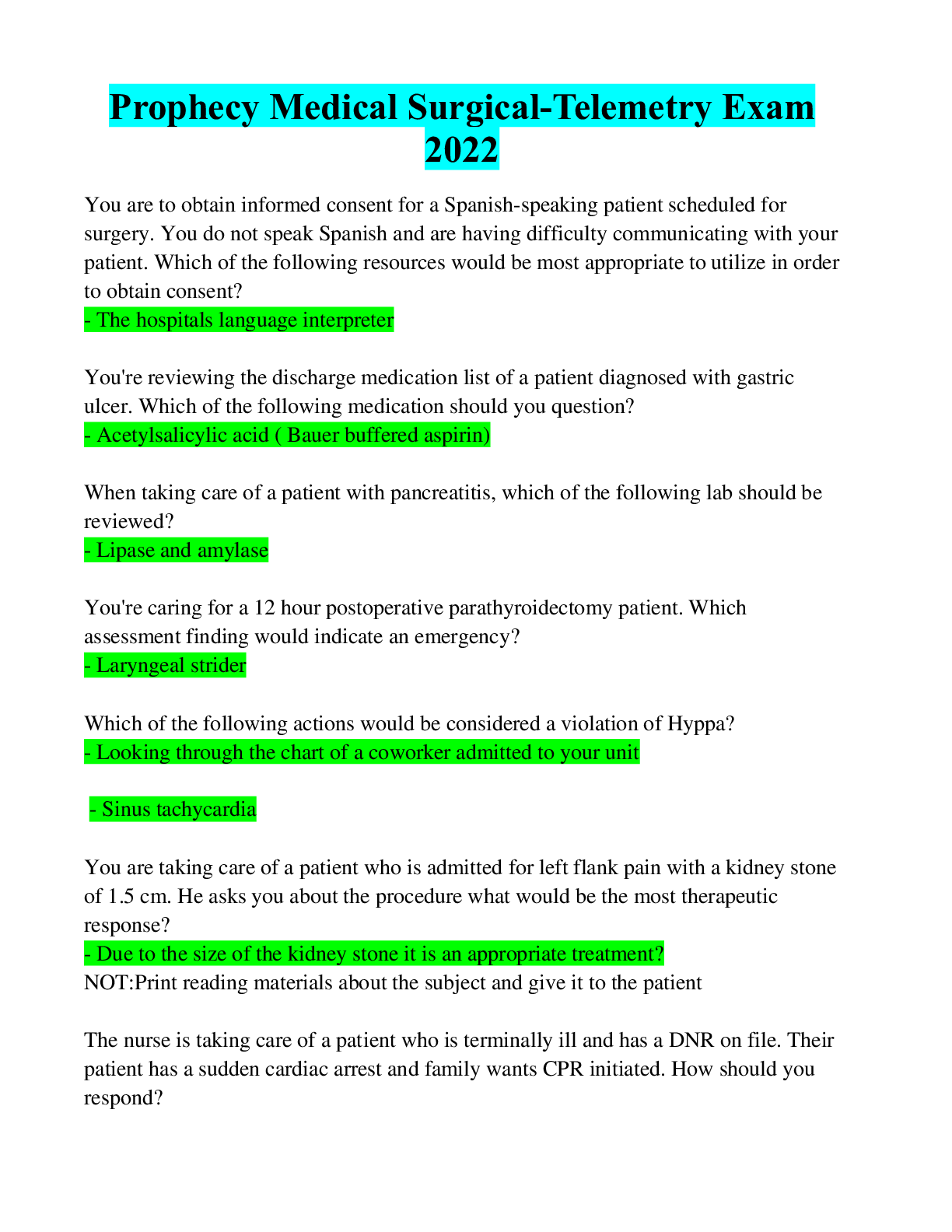
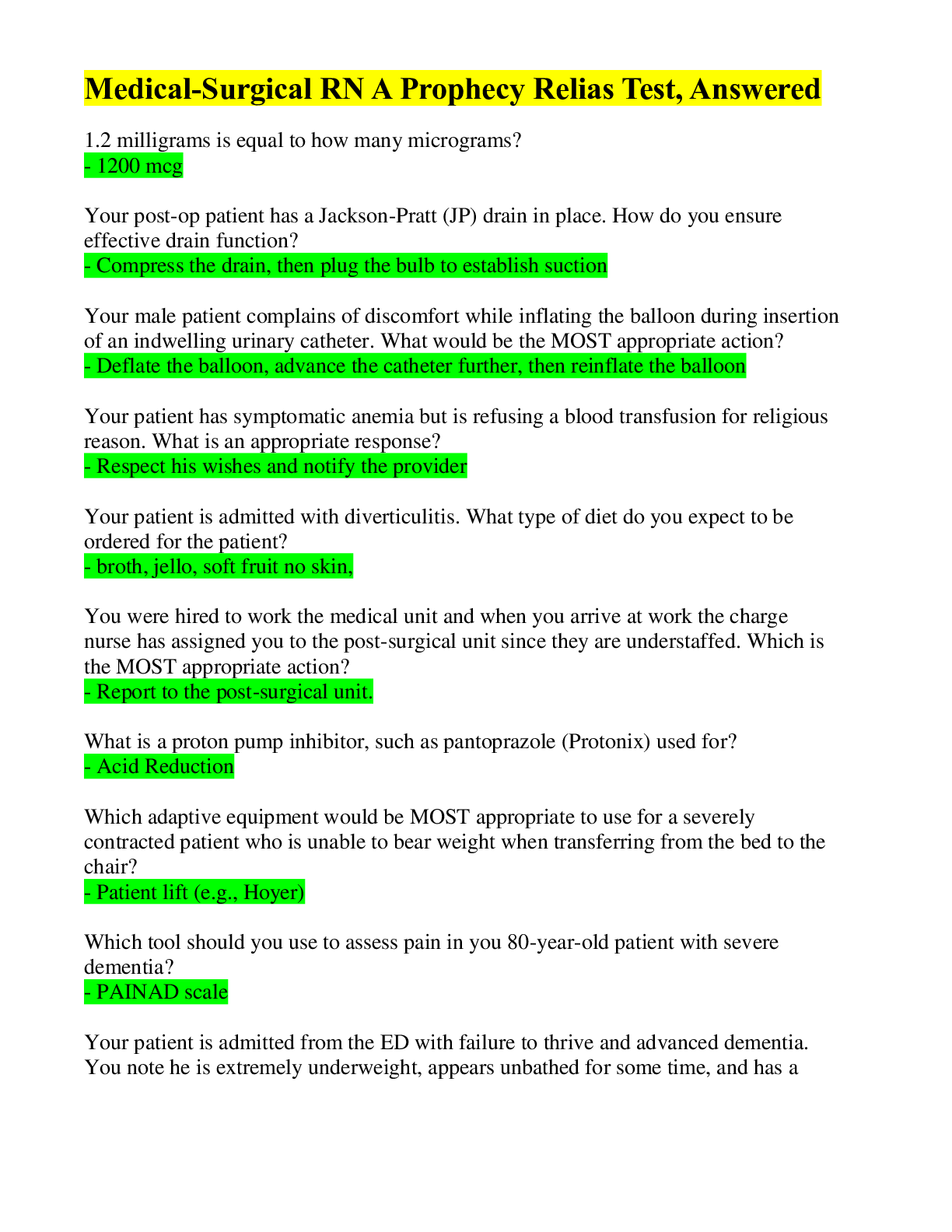
.png)

.png)
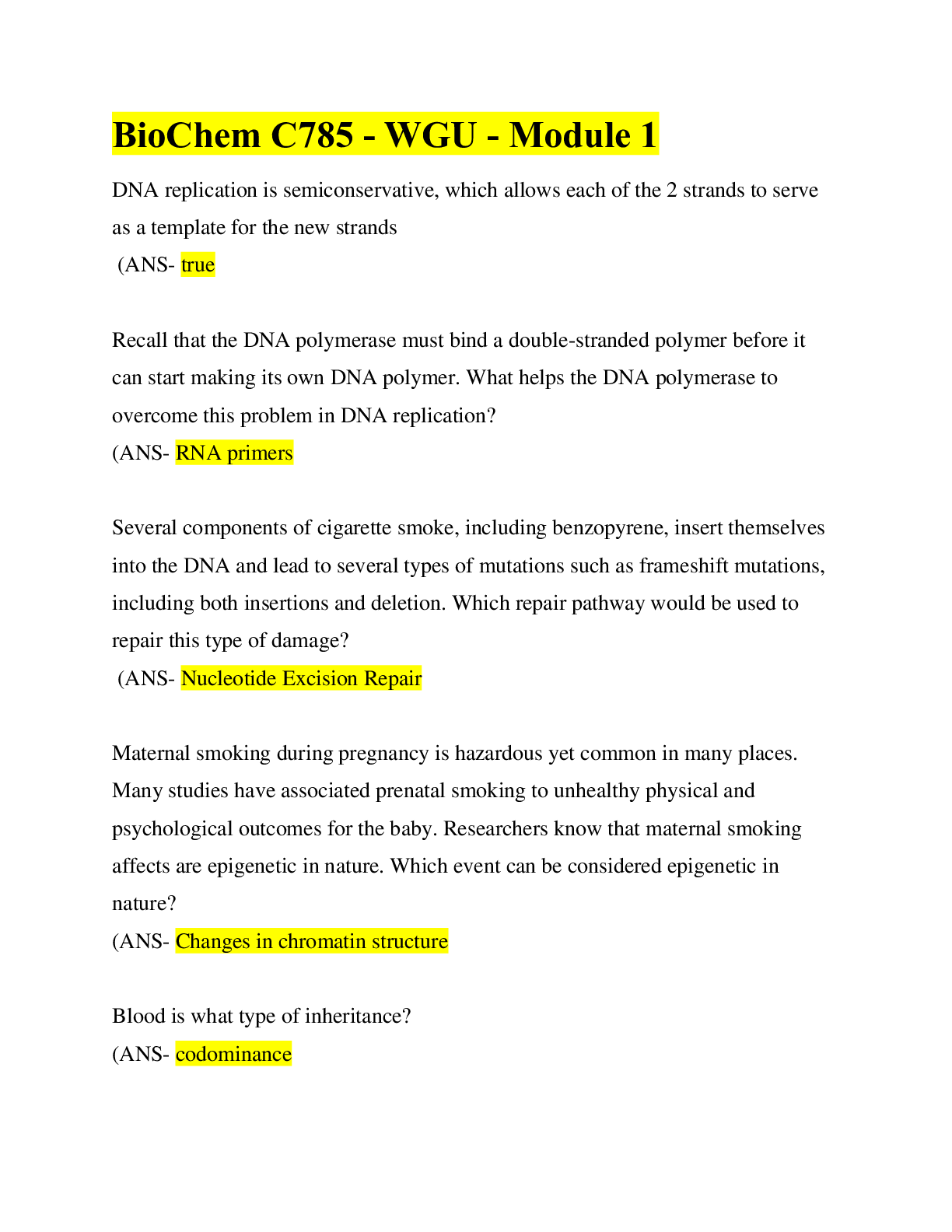

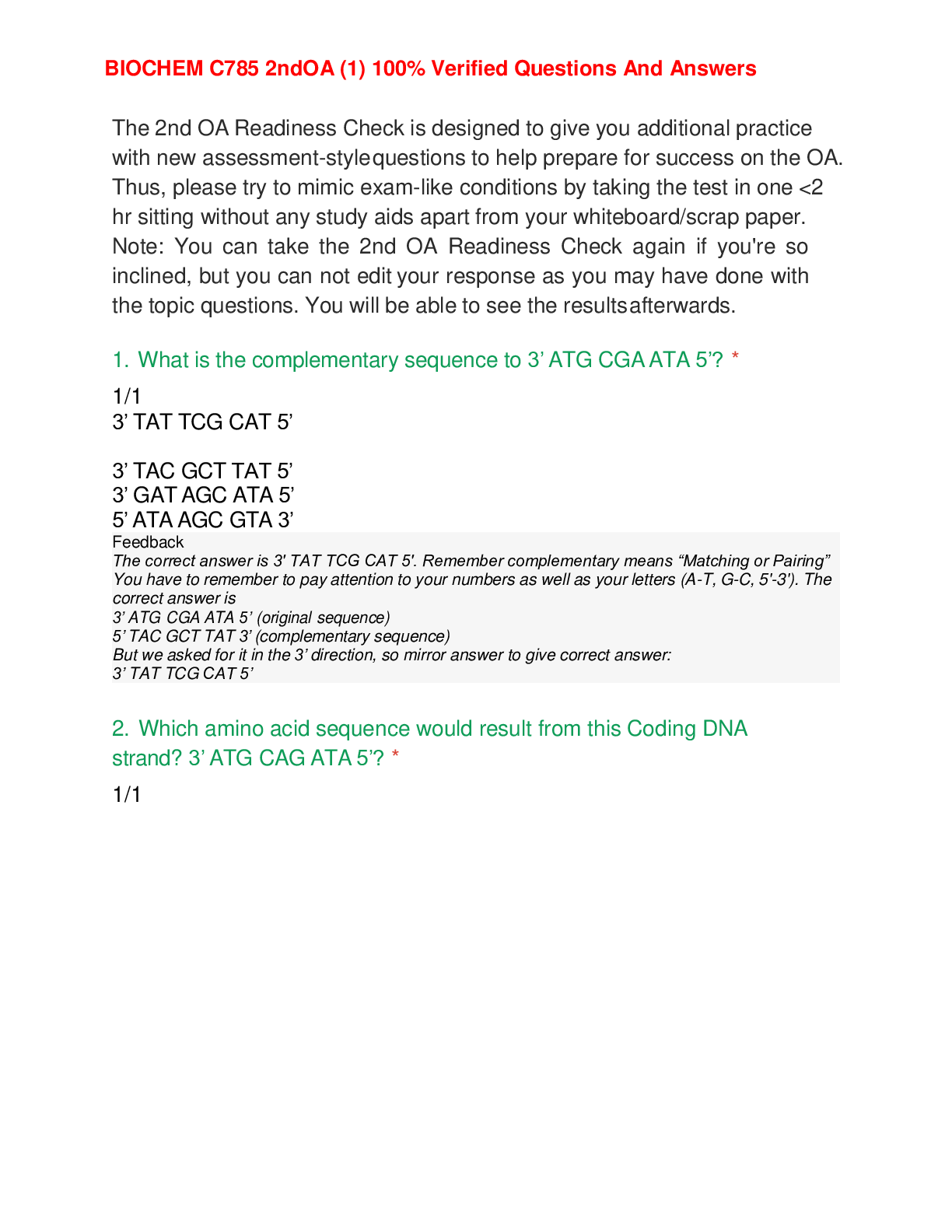

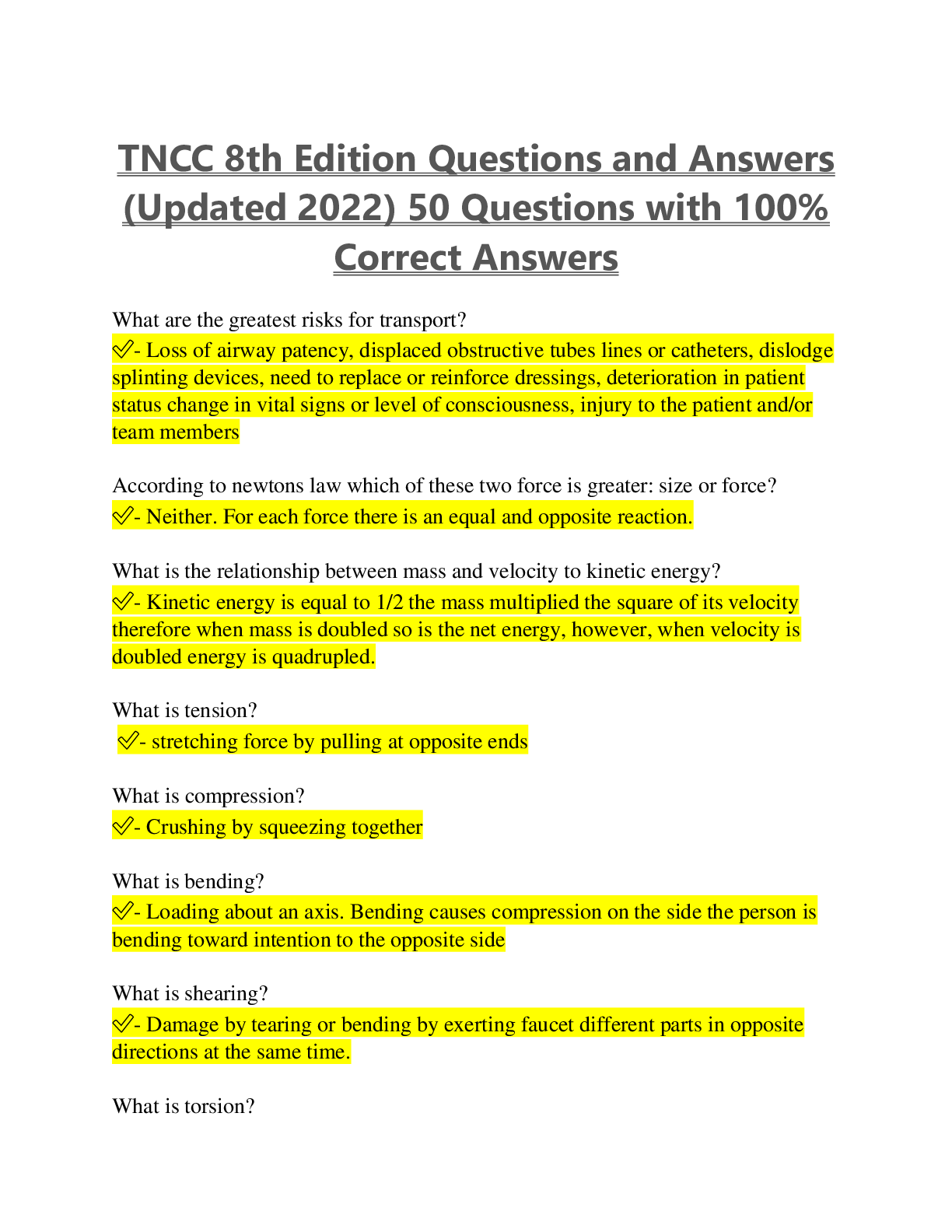
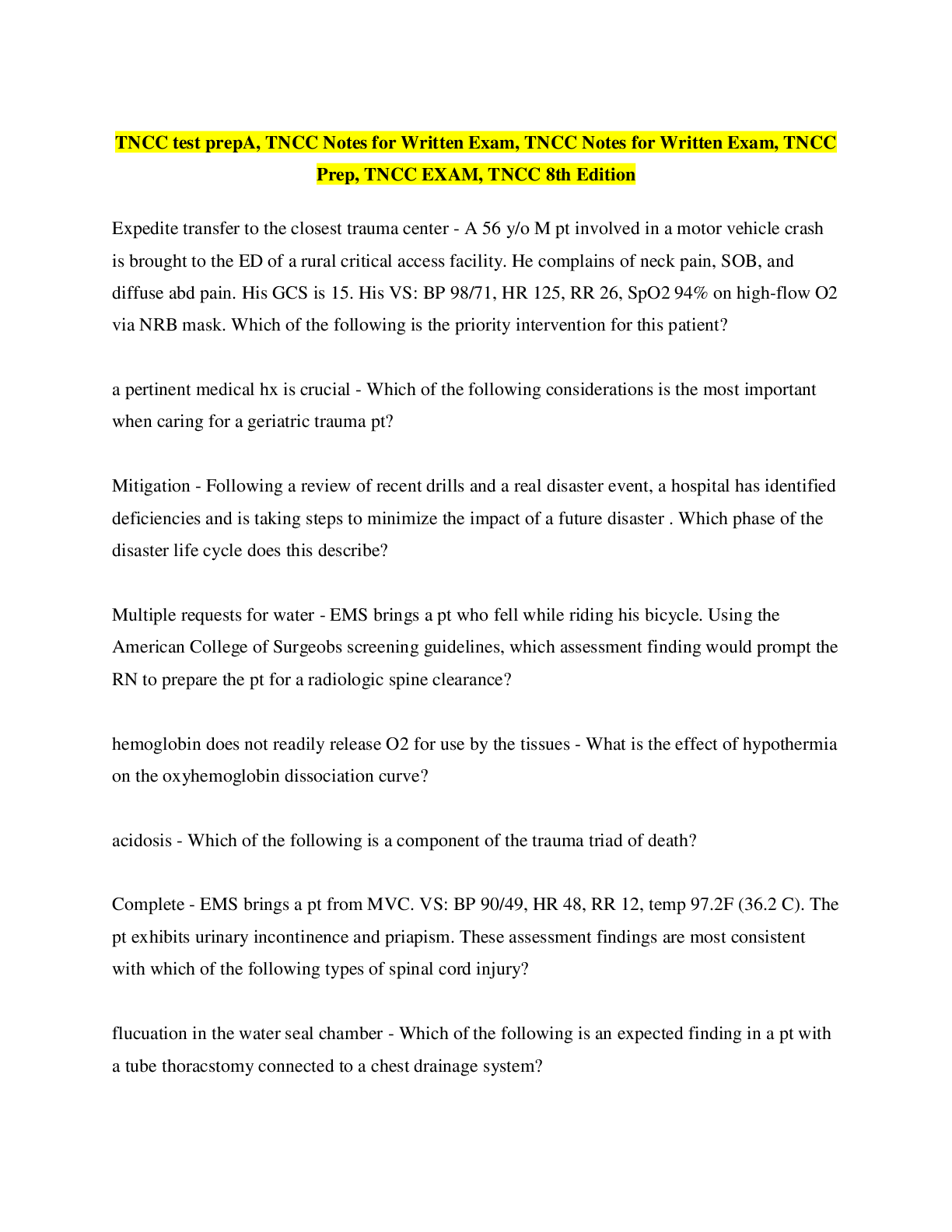
.png)
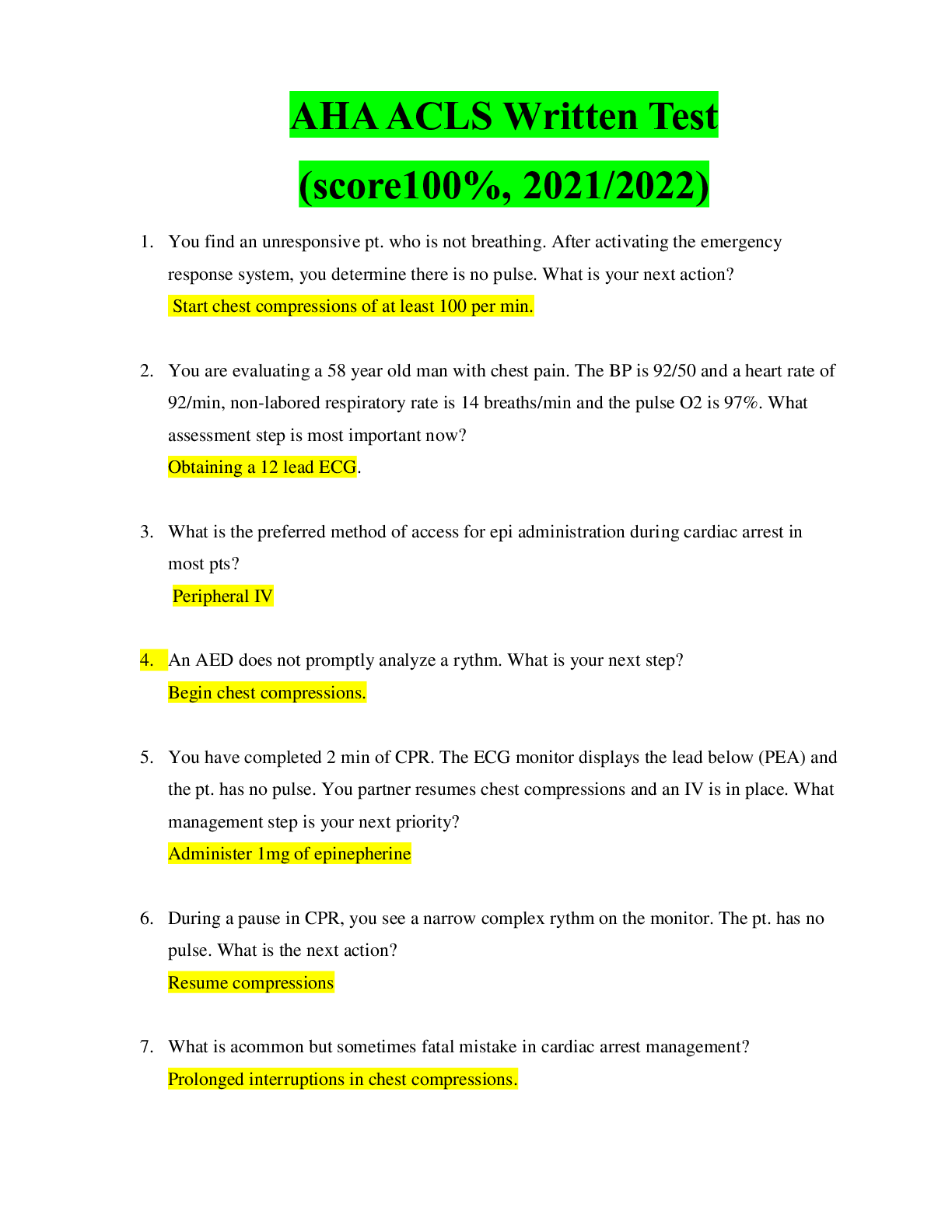
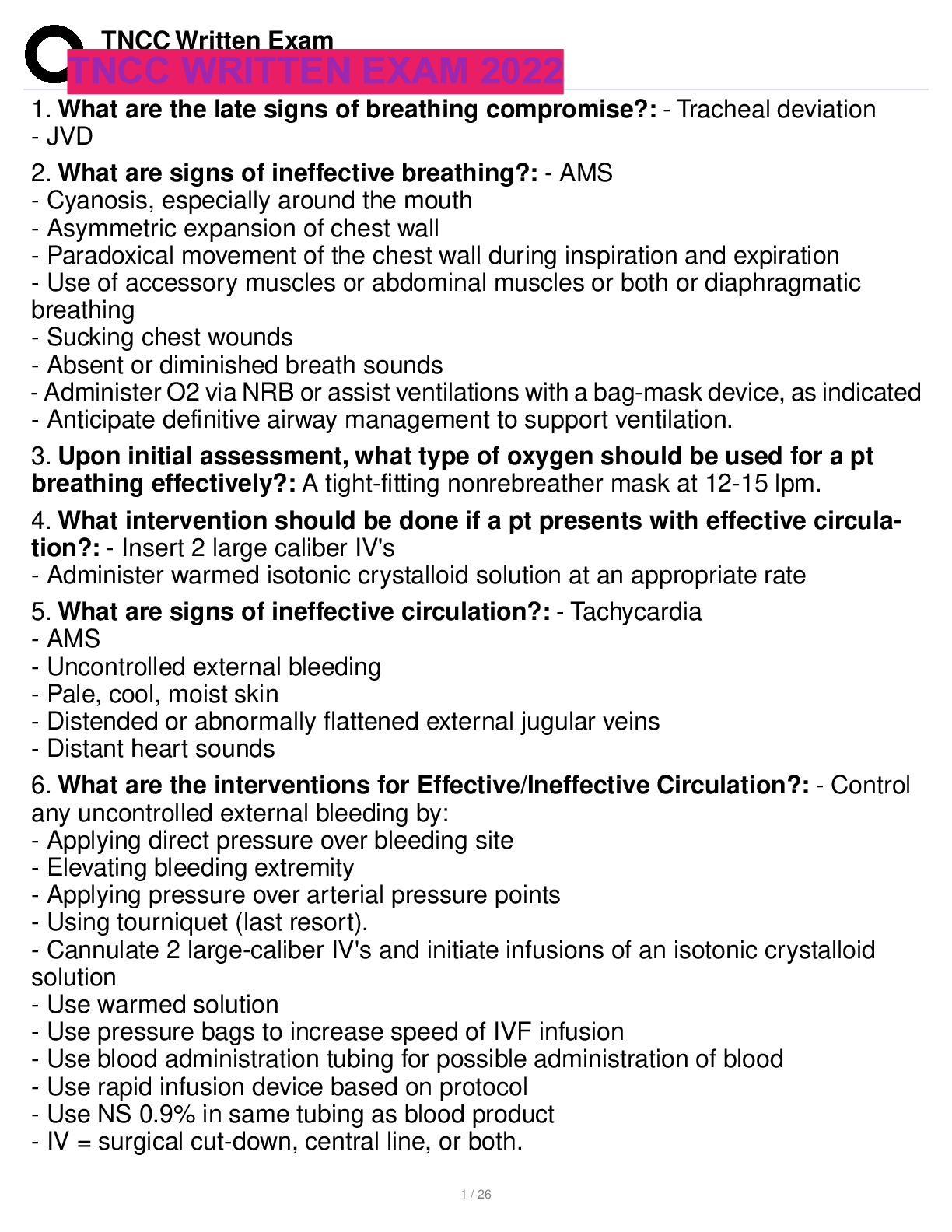






.png)

